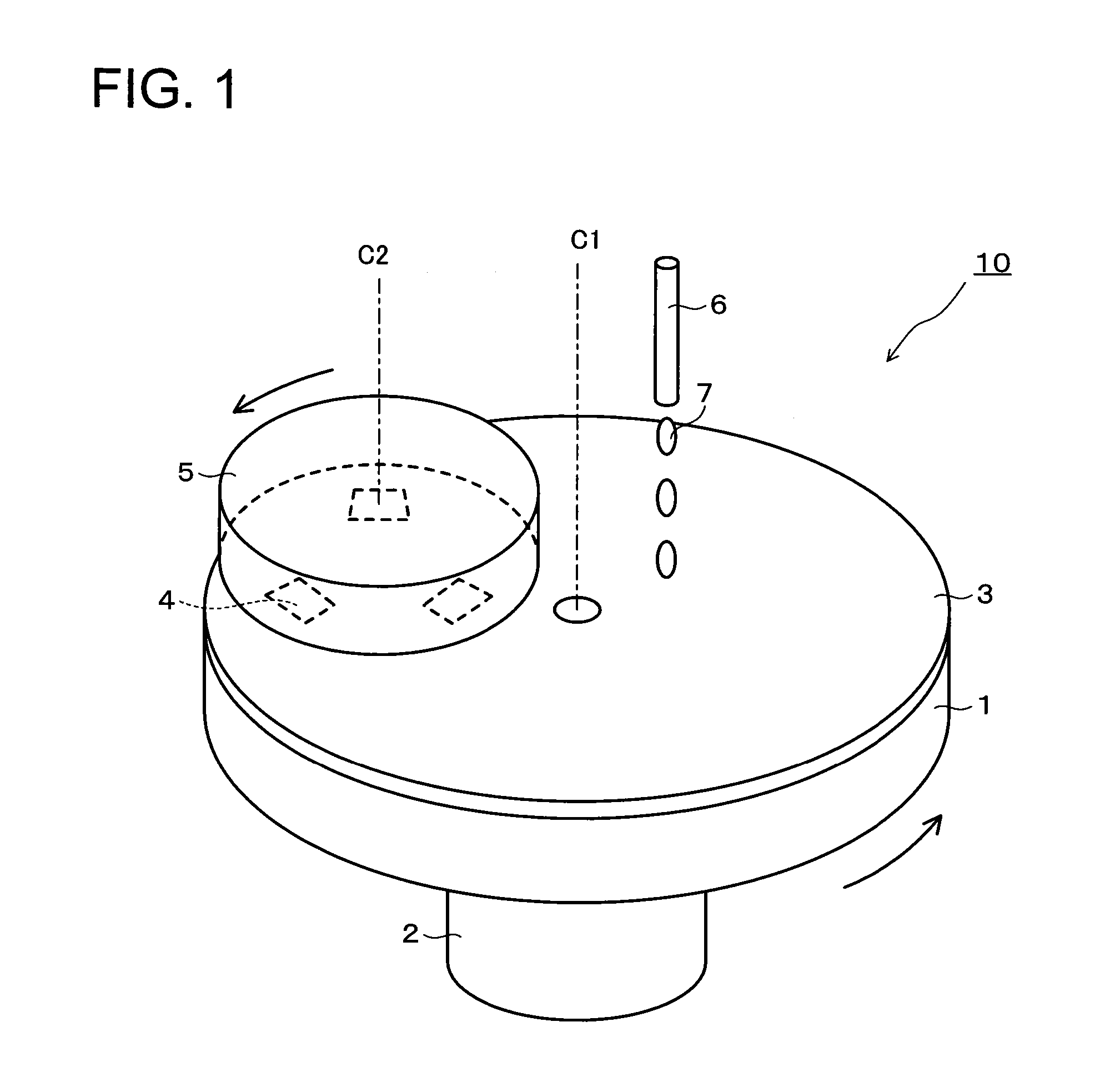Polishing method of non-oxide single-crystal substrate
a single-crystal substrate and polishing technology, applied in the direction of electrical equipment, semiconductor devices, aqueous dispersions, etc., can solve the problems of difficult to obtain silicon carbide single-crystal substrates having high smoothness, insufficient surface smoothness of silicon carbide single-crystal substrates, and inability to fabricate substrates, etc., to achieve high polishing rate, high hardness, and high chemical stability
- Summary
- Abstract
- Description
- Claims
- Application Information
AI Technical Summary
Benefits of technology
Problems solved by technology
Method used
Image
Examples
examples
[0051]The present invention will be hereinafter concretely described based on working examples and comparative examples, but the present invention should not be limited to these working examples. Examples 1-15, an example 20, an example 21, an example 23, an example 25, examples 28-29, and an example 31 are the working examples. Examples 16-19, an example 22, an example 24, examples 26-27, an example 30, and an example 32 are the comparative examples.
examples 1-32
(1) Preparation of Polishing Liquid and Abrasive Agent Liquid (1-1)
[0052]In each of the examples 1-15, the example 20, the example 21, the example 23, the example 25, the examples 28-29, and the example 31 being the working examples, a polishing liquid was prepared in the following manner. First, pure water was added to potassium permanganate being an oxidant shown in Table 1 and Table 2, and the mixture was stirred for ten minutes by using a stirring blade. Next, a pH adjusting agent shown in Table 1 and Table 2 (phosphoric acid, nitric acid, potassium hydroxide, or sodium hydroxide) was gradually added to the liquid while the stirring was performed, to adjust pH to a certain value shown in Table 1 and Table 2, whereby the polishing liquid was obtained. Content ratios (concentrations; mass %) of components used in each of the working examples to the whole polishing liquid are shown in Table 1 and Table 2. Note that the oxidant concentration in Table 1 and Table 2 is not the concent...
PUM
| Property | Measurement | Unit |
|---|---|---|
| pressure | aaaaa | aaaaa |
| pressure | aaaaa | aaaaa |
| particle size | aaaaa | aaaaa |
Abstract
Description
Claims
Application Information
 Login to View More
Login to View More - R&D
- Intellectual Property
- Life Sciences
- Materials
- Tech Scout
- Unparalleled Data Quality
- Higher Quality Content
- 60% Fewer Hallucinations
Browse by: Latest US Patents, China's latest patents, Technical Efficacy Thesaurus, Application Domain, Technology Topic, Popular Technical Reports.
© 2025 PatSnap. All rights reserved.Legal|Privacy policy|Modern Slavery Act Transparency Statement|Sitemap|About US| Contact US: help@patsnap.com


